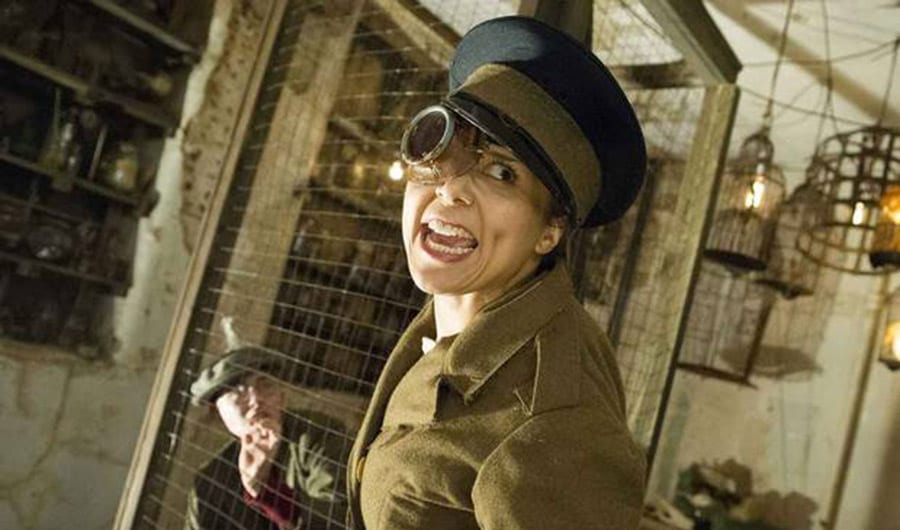The stage adaptation of Philip Pullman’s version of the famousGrimm Tales has been invented as a lovely family entertainment perfect for Christmas and can undoubtedly rival any traditional panto you might want to book during our forthcoming festive season. Beautifully and meticulously designed by Tom Rogers Grimm Tales are a fairy tale world which sparkles with magic aura thanks to clever lighting design by Howard Hudson and atmospheric music by Richard Hammarton. However this show is neither for those looking for an exciting theatrical experience nor even for the fans of Philip Pullman as it is devoid of any edge and grit of his previous fantasy books. Pullman admits in the show’s programme that he wanted to tell simple stories without any politics of his past work that sparked many fierce debates. The director, Philip Wilson took on Pullman’s vision and decided to create a very simple show focused on storytelling as it is done in children’s theatre. ‘Once there was a king/ a father’ (etc) formula used for all six Grimm stories staged at the Bargehouse soon becomes repetitive as it lacks any dramaturgical framing device that would carry all six stories into some kind of meaningful conclusion.
Grimm Tales advertised as ‘a realm of dark adventure’ are neither dark nor adventurous. Style over substance reigns, perhaps not in the worst sense but neverthelesstoo much design stifles Wilson’s simple story telling. Acting is solid with the whole ensemble managing to project their voices very well in the tricky space they need constantly navigate as they move from room to room and floor to floor. Unfortunately it also lacks emotional investment and risk-taking as most actors are unable to create any tension. That is why Grimm Tales do not quite work as an immersive show because they do not invite active spectatorship. As the audience move to a different space to hear a different story (or a subsequent part of the same story), each time they have to sit down quietly on the long benches (on either side of the room) while actors perform their short scenes. The lack of any character development in this production (with small exceptions to the rule, really good Nessa Mathews for example) proves that bringing to life stock characters from the fairy tales is quite challenging actually.
I wish Wilson had infused this adaptation with more quirkiness and a touch of avant-garde (which is showing in the excellent design of many costumes). And there are some more interesting unusual and oneiric moments that appear in this production, especially through the use of puppetry effectively utilised in the tale of Three Little Men. The overall impression of this slightly laboured over-designed adaptation is that Wilson’s Grimm Tales become a kind of upmarket panto (at a staggering price of £45 per ticket). While half of the country is feeling the squeeze of the economy and one of the staged fairy tales, Hansel and Gretel, shows well enough to what tragic consequences poverty can drive parents this makes me think that the creators of the show are a bit out of touch with reality which seems perhaps an odd accusation when reviewing a staging of fairy tales, but there you have it.

